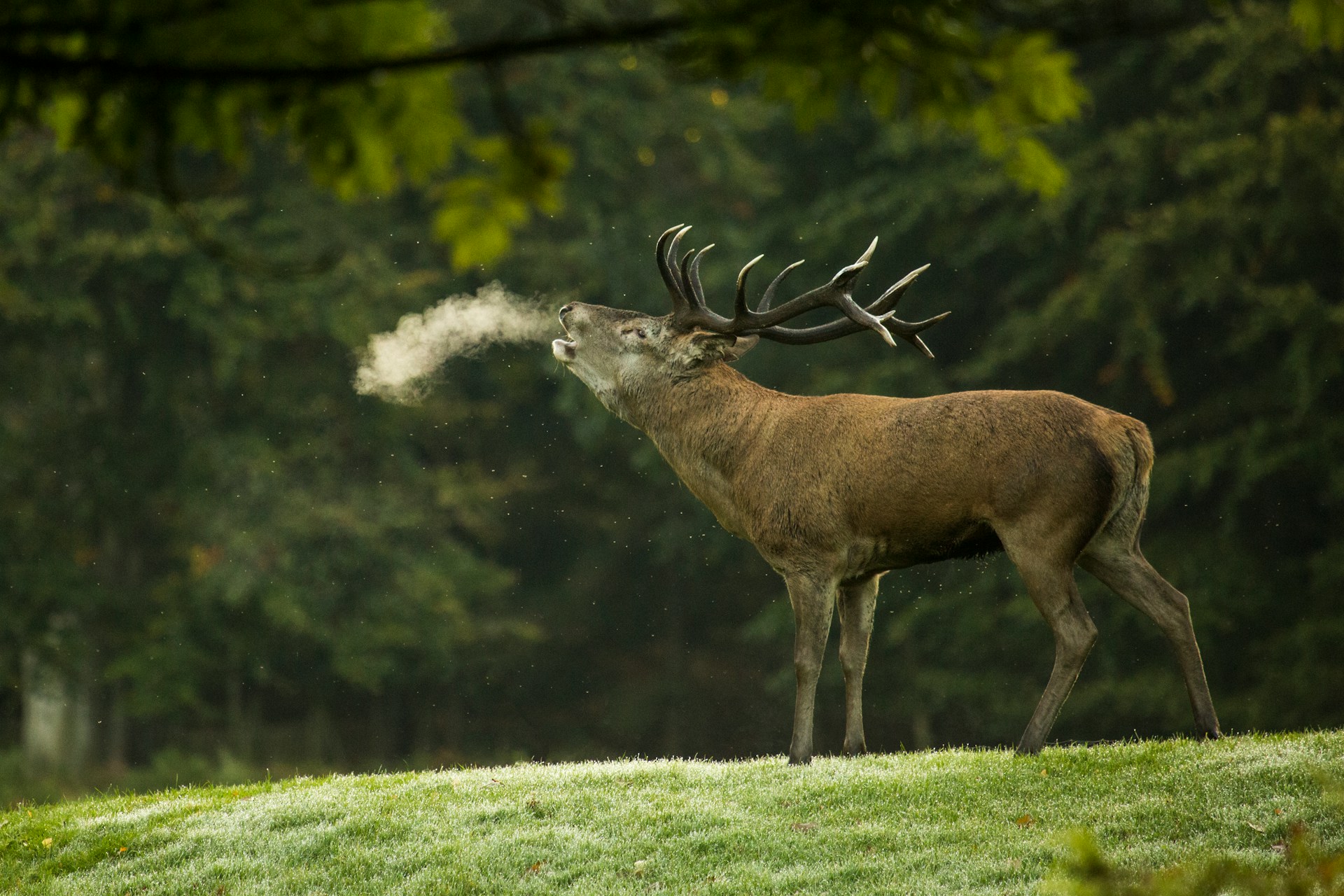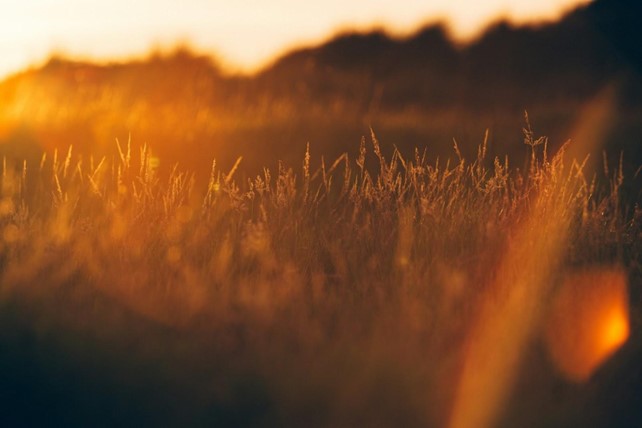7
Simple Strategies for Sharper Wildlife Images In 2024
Want to capture jaw-dropping wildlife photos that tell mesmerizing visual stories? The secret lies in mastering simple techniques tailored for beginners. Predict animal movements, harness golden hour lighting, approach with stealth - these strategies elevate shots from good to iconic. Patience brings rewards, but persistence overcomes setbacks. Explore our incredible planet while honing your skills and creating inspiring images.
The wildlife wonders are waiting - develop your photographer's eye this year and take your audience on an adventure. Let's uncover the secrets to striking wildlife photos that connect hearts, minds, and souls to Earth's majestic creatures. Your camera is the passport to untamed worlds most never see.
1.
Understanding Animal Behavior

One of the keys to incredible wildlife photography is researching and observing your subject's patterns and behaviors. Familiarizing yourself with a species' habits and mannerisms allows you to predict their movements for better photo opportunities. For example, knowing that deer are most active at dawn and dusk can inform where and when to set up for prime shooting.
Patience is crucial when it comes to photographing wildlife in its natural state. Sitting quietly in one spot for extended periods as you wait for the material to unfold builds the understanding required for those iconic shots. While it takes time, the reward is capturing authentic animal behaviors that tell a story. Simply snapping what's in front of you will generate passable photos, but putting in the effort to grasp your subject's actions results in images that truly shine.
As you spend more time with a species, you'll discover small details that enhance the impact of your photos. The more insight you gain into an animal's world, the more extraordinary ability you'll have to convey its essence on camera. So whether you're tracking a herd of elk or staking out a hummingbird feeder, let your knowledge guide you toward impactful wildlife images.
2.
Mastering the Golden Hours

One of the most essential techniques for striking wildlife photos is mastering natural light during the golden hours. The golden hours refer to the first and last hour of sunlight during the day when the light takes on a warm, golden tone. This lighting is soft and diffuse, perfect for bringing out rich colors and textures in wildlife subjects.
The golden hours are the optimal times for wildlife photography because the quality of light enhances the visual appeal of images. When the sun is low on the horizon during these times, it casts a glow that flatters animals and brings out captivating details. Planning your wildlife shoots around dawn and dusk to harness this flattering light entirely is critical.
Some tips for making the most of the golden hours include:
Scout locations beforehand to determine where the light will be best oriented during the prime times.
Use a reflector to bounce golden hour light onto shaded areas of your subject. This fills in shadows for a more even exposure.
Experiment with backlighting during the last golden hour to create striking rim-light effects.
Adjust camera settings manually to achieve the right balance of exposure, contrast, and warmth.
Taking advantage of the magical lighting during the golden hours gives your wildlife images an ethereal beauty. It comes down to being ready to capture animals bathed in that perfect golden glow.
3. The
Art of Stealth and Silence
An essential skill in wildlife photography is mastering the art of approaching animals discretely. Being stealthy allows you to get close enough for frame-filling shots while avoiding disturbing the natural behavior of your subjects. The quieter and more inconspicuous you can be, the better quality images you'll be able to capture.
Some tips for stealthy field techniques include:
Using blinds or camouflage gear to blend into the surroundings. Breaking up your silhouette makes you less conspicuous.
She was walking slowly and deliberately to minimize noise. Sudden movements can startle animals.
I was shooting from a low angle to use terrain or foliage as cover.
Using a long lens so you can photograph from a greater distance.
You pay attention to wind direction so your scent doesn't alert animals.
They wait patiently in one spot for animals to acclimate to your presence for extended periods.
Avoiding excess noise is just as important as staying hidden. Turn off electronic devices, avoid chatter, and use the quietest camera settings possible.
With practice, you can learn to move through the field almost invisibly. Mastering stealth and silence will reward you with more authentic wildlife behavior to photograph as animals carry on undisturbed. This ultimately results in images that convey a true sense of your subject in its habitat.
4.
Equipment Essentials for Wildlife Photography

Having the right gear for capturing fast-moving and elusive wildlife subjects is essential. While professional equipment can produce outstanding results, there are many beginner-friendly cameras, lenses, and accessories well-suited for the demands of wildlife photography.
A cropped sensor DSLR or mirrorless camera body provides the focal length range you need using more affordable telephoto lenses. Features like fast burst mode and autofocus tracking are beneficial as well.
As for lenses, a versatile telephoto zoom lens in the 200-400mm range lets you photograph wildlife from a safe distance. Prime lenses with fixed focal lengths over 400mm also work well.
Stability accessories like tripods and monopods are necessary for minimizing camera shake and achieving tack-sharp images. A beanbag can also provide stable camera support in a pinch.
Some other helpful gear includes camouflage clothing, portable blinds, external flash units, and rain covers to protect your equipment in the field.
While specialized gear can be costly, DIY solutions like lens collars are made from supplies available at a hardware store. Focus first on a camera body and lens suited for wildlife before investing in more advanced equipment. You'll be ready to start honing your skills with the fundamentals covered.
5. The
Power of Composition
How you compose your wildlife photographs is as important as what you photograph. Mastering basic compositional techniques can take your images from snapshots to compelling works of art.
Some key strategies for more intentional wildlife compositions include:
Using the rule of thirds: Place your subject off-center so the image has more visual energy. Align animals along the lines or intersections of thirds.
Leading lines or curves: Use natural lines like shorelines or winding trails to guide the viewer's eye through the frame.
Framing: Frame animals within natural structures like trees, arches, or foliage. This provides context and perspective.
Patterns and texture: Incorporate interesting repeated patterns and rich textures as supporting elements.
Negative space: Allow space around your subject to increase the focus on them.
Perspective: Shoot from unique vantage points like low angles or high up to add interest.
Cropping tight: Get close and fill the frame with your animal subject for maximum impact.
Don't just zoom in. Take the time to compose each element in the frame consciously. You combine your deep knowledge of animal behavior with compelling composition, resulting in wildlife images that truly stand out.
6. The
Significance of Patience and Persistence
They say that patience is a virtue, especially regarding wildlife photography. Some days, you may head into the field at dawn, sit for hours in a cramped blind, and still not capture a usable image. Other times, everything comes together perfectly, and you get shots that make the effort all worthwhile. The unpredictable nature of photographing animals in the wild means that persistence is just as important as patience.
I'll never forget the frigid winter morning I staked out a fox den for what felt like an eternity. Just as I had given up hope of seeing any kits that day, the mother fox emerged into the snowy clearing with her trio of adorable pups. By persevering a little longer despite the conditions, I was rewarded with the chance to photograph a tender family scene that still makes me smile.
Some outings will test your motivation, while others reaffirm your passion. Don't get discouraged by days that don't go as envisioned. Every time you're out practicing your field-craft, it makes you better prepared for moments of photographic serendipity. With continued patience and persistence, you'll capture iconic wildlife images that inspire others to embrace the adventure.
7.
Post-Processing Tips for Enhancing Your Wildlife Images

Getting the shot is only half the battle in wildlife photography. Post-processing is a crucial next step to bring your images to life truly. While ethical standards should always be maintained when editing photos of wild animals, there are effective techniques you can use to enhance the visual impact of your shots.
Once you've imported your photos, review them and determine what adjustments could make the image pop. Tweaking the brightness and contrast levels often adds that extra punch a photo needs. I like to boost contrast until textures and details stand out gradually. Boosting vibrance slightly is another easy way to intensify colors without making them look garish and over-saturated.
Feel free to open your images creatively to hone the composition creatively. Cropping out distracting elements helps keep the viewer's focus on the main subject. Tightly framing the animal's face and eyes is a practical approach.
If you shoot at high ISOs, you'll likely need to reduce noise to minimize graininess and discoloration. The key is finding the right balance so details don't look smeared. I prefer using the luminance noise slider rather than the overall noise slider.
For tack-sharp wildlife images, selectively sharpening is crucial. Sharpen softly focused areas, like the eyes and other fine details, but avoid oversharpening the entire image. This keeps fur and feathers looking natural. Subtle dodging and burning can also direct attention to the eyes.
Converting specific images to black and white is another artistic choice for giving wildlife shots timeless appeal. It works best for graphic compositions that depend less on color.
The beauty of post-processing lies in bringing out the essence of your wildlife image to match the vision you had when you clicked the shutter. Master these fundamental techniques to take your photos to the next level.
Conclusion
Capturing stunning wildlife photographs requires patience, dedication, and an appreciation of Earth's incredible biodiversity. While mastering the technical complexities may seem daunting initially, beginners can elevate their images by following simple tips like researching animal behaviors, harnessing golden hour lighting, approaching subjects with stealth, intentionally composing shots, and persisting despite challenges. You can tell captivating visual stories of the natural world with practice and creativity. So get out there, explore wildlife wonders, and capture iconic shots in 2024. This rewarding photography pursuit will deepen your connection to the animals you photograph.
Author's Bio

Stacy Witten is a photographer and the author of the Lensespro blog. She has been a professional photographer for seven years and possesses excellent knowledge and passion for photography.
Return from 7 Simple Strategies for Sharper Wildlife Images In 2024 to K2K Home Page
To make a safari rental booking in South Africa, Botswana or Namibia click here
"It's 768 pages of the most amazing information. It consists of, well, everything really. Photography info...area info...hidden roads..special places....what they have seen almost road by road. Where to stay just outside the Park...camp information. It takes quite a lot to impress me but I really feel that this book, which was 7 years in the making, is exceptional." - Janey Coetzee, founder of CAROK (Camps and Roads of Kruger) South Africa
"Having a passion for the region itself and having to know about all dynamics, water holes and ideal roads for a period of 6 years - I wish I had this guide on my first trip already!" - Morkel Erasmus, Secunda, South Africa
"Mario and Jenny take you to places that are not always visited, and their descriptions of the more remote camps will allow you to make an informed decision without wasting time and money" - Bob & Sherry Shepardson, DeBary, Florida, USA
"Your time and money are valuable and the information in this book will help you save both." - Don Stilton, Florida, USA
"I highly recommend the book to anyone visiting Etosha National Park to photograph the animals - or anyone considering an African photography safari in the future." - Anne Darling, Cognac, France
"As a photographer and someone who has visited and taken photographs in the Pilanesberg National Park, I can safely say that with the knowledge gained from this eBook, your experiences and photographs will be much more memorable." - Alastair Stewart, BC, Canada
"This work is so much more than an eBook, because it is also a guide, a tutorial, an inspiration and a must-have for anyone interested in wildlife photography" - Findtripinfo.com, USA
Photo Safaris on a Private Vehicle - just You, the guide & the animals!









New! Comments
Have your say about what you just read! Please leave us a comment in the box below.